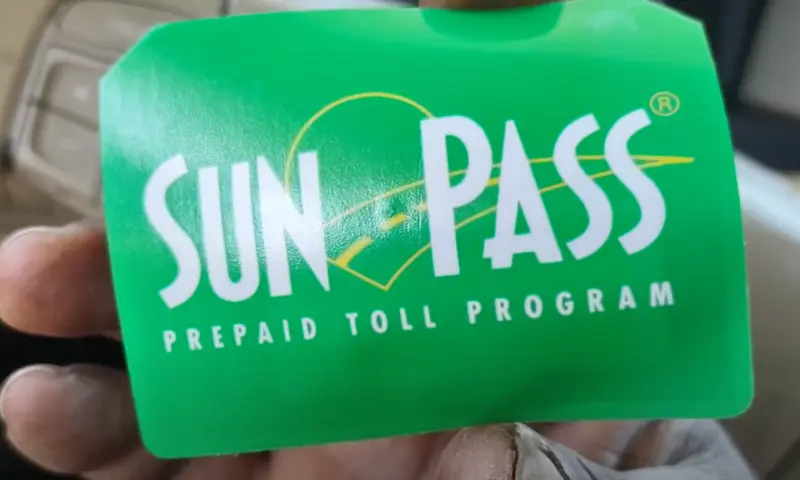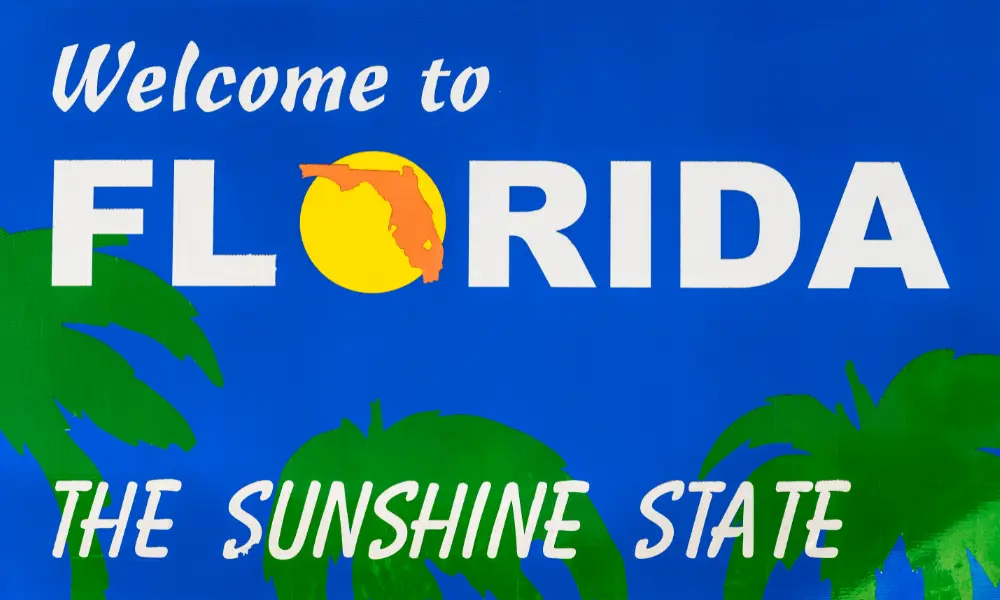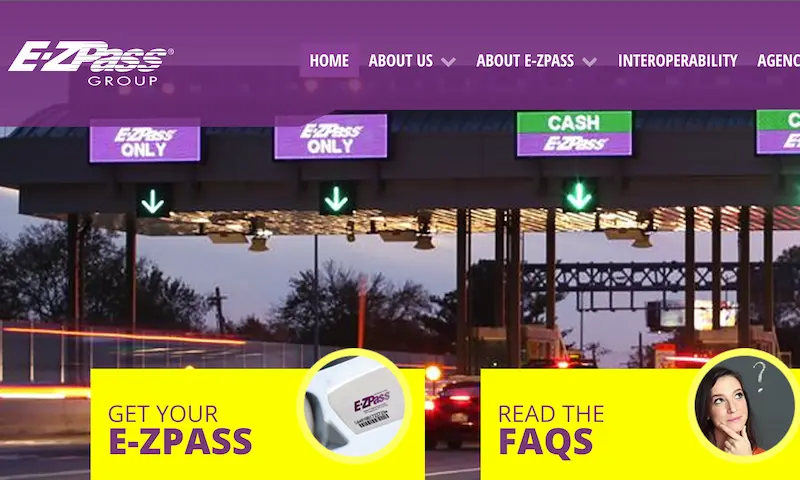Deciding between the E-ZPass Standard Plan and Pay Per Trip can save you both time and money on tolls. With the Standard Plan, you maintain a prepaid balance, perfect for regular commuters. Alternatively, Pay Per Trip directly charges your bank account per use, ideal for occasional travelers.
What Is E-ZPass?
If you’re driving in New York, chances are you’ll cross bridges or take the New York State Thruway at some point, where tolls are a fact of life. That’s where E-ZPass enters the scene. E-ZPass is an electronic toll collection system that makes travel more convenient for you. No more fumbling for cash or waiting in line to pay tolls.
How does it work? When you sign up for E-ZPass, you receive a small electronic tag to place on your windshield. As you pass through a toll lane, this tag is scanned, and the toll amount is automatically deducted from your pre-funded E-ZPass account.
Here’s a quick rundown:
- No Cash Needed: With E-ZPass, the days of needing exact change are over. The system automatically deducts the toll from your account.
- Time-Saver: You can breeze through toll plazas without stopping.
- Toll Discounts: Often, you’ll pay less per toll compared to paying cash.
Common Plans:
- Standard Plan: Ideal if you travel frequently.
- Pay Per Trip: Tolls are deducted directly from your bank account as needed, without prepayment.
Remember, each time you use your E-ZPass on tolls, bridges, and the Thruway, you’re not just saving time; you’re also making your entire trip smoother. Plus, your wallet gets to take a little break with those discounted rates!
Understanding the Standard Plan
When you opt for the E-ZPass Standard Plan, you’re choosing a pre-paid toll collection system that can save you time on your commutes. Below, you’ll learn how this plan operates, its benefits, and some limitations to consider.
How the Standard Plan Works
The Standard Plan requires you to maintain a pre-paid balance on your account. When you pass through a toll, the toll amount is automatically deducted from your account balance. It’s essential to ensure your account is always funded to avoid potential violations or fees. Account reloading typically occurs through a linked credit card when your balance falls below a pre-set threshold.
Standard Plan Benefits
- Time-Saving: Skip the cash lanes and keep moving through tolls.
- Discounts: You may receive reduced rates compared to cash or pay-per-trip options.
- Convenience: Automatic reloading means you don’t have to think about your balance daily.
Standard Plan Limitations
- Prepayment: A minimum balance is required; you’ll need to fund your account upfront.
- Overdraft Concerns: If your linked credit card cannot cover a reload, you might face additional fees or penalties.
Exploring the Pay Per Trip Option
When considering EZ-Pass options, the Pay Per Trip plan offers a different approach to toll payments, directly linking your toll usage with your checking account for a cashless tolling experience.
How Pay Per Trip Works
With the Pay Per Trip plan, tolls are automatically deducted from your checking account after you use a toll facility. This process uses the Automated Clearing House (ACH) system, ensuring that payments are cashless, and there is no need to maintain a prepaid balance.
Pay Per Trip Benefits
The major benefit of Pay Per Trip is convenience. Without the need to preload your account or maintain a minimum balance, it simplifies cashless tolling by charging you only after you drive through a toll. It’s a straightforward solution that pairs well with your checking account, especially if you’re an infrequent user of toll roads.
Pay Per Trip Limitations
However, this plan may not be suitable for all drivers. If you do not have a consistent checking account balance, Pay Per Trip could potentially lead to issues if insufficient funds are available when a toll is deducted. Keep in mind that while Pay Per Trip is convenient, it differs from prepaid plans which may offer discounts for frequent travelers.
Comparing Costs and Savings
When choosing between the Standard Plan and Pay Per Trip, you need to consider how each affects your wallet. The right choice depends on your specific travel frequency and the discounts you can utilize.
Standard Plan Costs
Under the Standard Plan, you preload your E-ZPass with funds that are then deducted as you pass through tolls. Depending on where you drive, there’s potential for savings due to discounts at specific Authorities like the Port Authority and the New York State Bridge Authority. For example:
- At MTA Bridges and Tunnels, having an E-ZPass gives you a discount on tolls.
- At all New York State Thruway facilities, further discounts apply.
Pay Per Trip Costs
Contrastingly, Pay Per Trip links directly to your bank account, deducting tolls only as you incur them. While you don’t need to maintain a prepaid balance, you won’t miss out on E-ZPass discounts provided by various Authorities:
- You still get discounts at MTA Bridges and Tunnels.
- The Pay Per Trip FAQ explains that the convenience of direct debits might suit you if you prefer not to monitor a prepaid balance.
Assessing Overall Savings
To truly assess savings between the two options:
- Review frequent routes to identify applicable Authorities for potential discounts.
- Consider how often you travel. Frequent commuters might favor the Standard Plan for its budgeting ease, while infrequent travelers might prefer Pay Per Trip to avoid tying up funds.
Additional Plans and Options
When considering E-ZPass plans, you should explore the variety of options available beyond the Standard Plan and Pay Per Trip. These alternatives, such as the Thruway Annual Permit Plan and various Commuter Plans, cater to different usage patterns and can offer significant savings.
Thruway Annual Permit Plan
The Thruway Annual Permit Plan is formulated for drivers who frequently travel on the New York State Thruway. Under this plan, you receive unlimited annual access for a fixed fee, making it a cost-effective option if you’re a regular commuter on this route. Remember, this plan is most beneficial if you surpass the break-even point where the annual fee becomes less than the cumulative cost of individual tolls.
Commuter Plans
Commuter Plans are designed to benefit drivers who travel often on specific routes or bridges. With these plans, you get a discounted toll rate per trip. For instance, the Governor Mario M. Cuomo Bridge Commuter Plan offers a discount, but usually requires a minimum number of trips per month to retain the discounted rate. These plans are perfect if your daily commute involves frequent crossings and you wish to minimize toll expenses over time.
It’s important to assess your travel patterns and choose the right plan that aligns with your needs. Seasoned commuters can truly capitalize on the savings offered by these specialized plans.
Impact on Travel and Convenience
When deciding between the E-ZPass Standard Plan and Pay Per Trip, your travel time and convenience are significantly affected. Your choice can streamline your trips and potentially reduce the hassle associated with toll payments.
Travel Time
With an E-ZPass, your commutes and road trips become smoother as you bypass cash lanes at toll plazas. For the Standard Plan, you preload your account, which eliminates the need for stopping or slowing down at toll booths. Pay Per Trip links directly to your bank account, and while still time-efficient, may be subject to bank processing times, which is worth considering when you’re frequently on the go.
Convenience Factors
The Standard Plan is straightforward: maintain a positive balance, and you’re ready to roll. Tolls are deducted from the amount you’ve preloaded. This option could be ideal if you prefer to manage your expenses in advance. With the Pay Per Trip arrangement, the tolls are automatically charged to your bank account post-travel, making it convenient if you’d rather not worry about pre-funding.
- Standard Plan: Prepay and forget; requires periodic balance checks.
- Pay Per Trip: Pay after travel; no upfront payment, linked to your bank account.
Both plans aim to simplify your toll payments, but the best fit depends on your travel frequency and how you like to manage your finances. Remember, your convenience is the priority.
Conclusion
When choosing between the E-ZPass Standard plan and Pay Per Trip, consider your driving habits and financial preferences.
- E-ZPass Standard Plan:
- Ideal if you’re a frequent traveler across toll roads and bridges.
- You maintain a pre-paid balance.
- Potentially more convenient for avoiding low-balance interruptions.
- Pay Per Trip:
- Suitable for occasional toll road users.
- Tolls are deducted directly from your bank account post-trip.
- Eliminates the need to pre-pay or maintain a minimum balance.
Carefully review the details on E-ZPass New York to ensure you select the option that best aligns with your needs. Remember that with Pay Per Trip, you’re authorizing direct debits from your account (Reddit discussion on E-ZPass options), while the E-ZPass Standard Plan might save you time at toll plazas and provide a smoother travel experience. Your choice should balance convenience, travel frequency, and how you prefer to manage finances. Keep in mind that switching plans is always an option if your circumstances change.
















